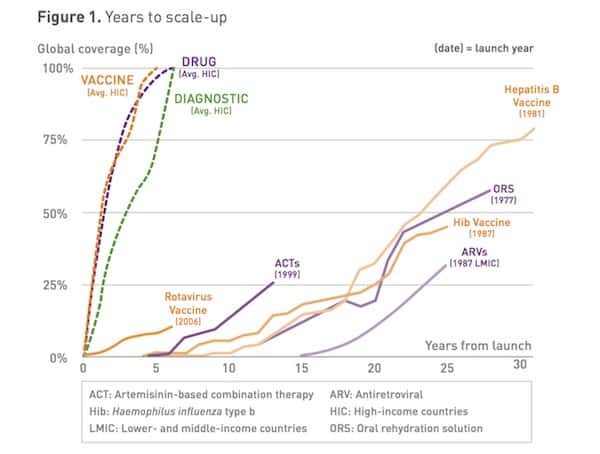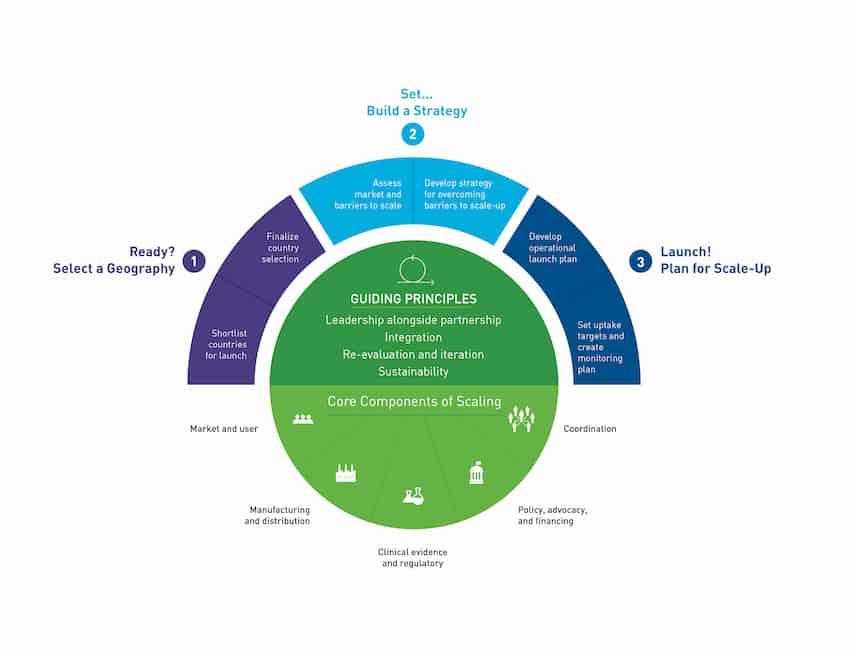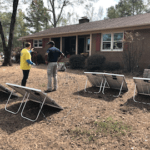Global Health Interventions Need to Hit the Ground Running. Here’s Some Pre-Race Help.
We know that scaling global health interventions is hard. Historically, critical global health interventions have seen late introduction, slow uptake and low coverage – with gaps in coverage falling disproportionately on the poor. While it can take decades for global health innovations to reach intended users at scale, “typical” launches in the United States and other high-income countries often reach their full coverage targets in less than five years.

Graphic adapted from analysis by the Bill & Melinda Gates Foundation, Dalberg Global Development Advisors and Boston Consulting Group.
The question is – what can we do to better overcome this challenge?
One solution: planning and getting introduction right from the start. In its white paper, “Launch Excellence IV: A New Launch Environment,” IMS Health describes a “six-month window” in which successful launches need to take shape. After this six-month window, IMS Health found that only a few launches (about 20 percent) were able to recover and achieve scale.
To help get it right from the start, USAID’s Center for Accelerating Innovation and Impact (CII) recently published “Ready, Set, Launch: A Country-Level Launch Planning Guide for Global Health Innovations.” This Guide brings a sharp focus to the critical pivot from global product development to targeted country selection and launch planning. With input from over 50 diverse practitioners – ranging from pharmaceutical and med-tech companies, donors, social enterprises, business schools and implementing partners – and lessons gathered from successful and not-so-successful launches, “Ready, Set, Launch” provides guidance, tools, and case studies to support country prioritization and the development of a comprehensive scale-up strategy and operational launch plan for global health innovations.
“Ready, Set, Launch”:
- Provides high-level guidance through three steps: 1) country prioritization, 2) strategy development, and 3) implementation planning (see the framework graphic below)
- Includes a toolkit with editable tools and templates
- Features real-world examples through comprehensive case studies and shorter vignettes that highlight lessons relevant to the launch planning process

See pages 7-8 of “Ready, Set, Launch: A Country-Level Launch Planning Guide for Global Health Innovations” for a summary of the framework.
How can “Ready, Set, Launch” be used in practice?
Our team at USAID’s Center for Accelerating Innovation and Impact applies this type of thinking to our own work in planning for launch and scale-up of global health innovations. For example, the guidance and principles in “Ready, Set, Launch” were applied to the development of the national scale-up strategy and implementation plan for chlorhexidine in Nigeria. Chlorhexidine, an antiseptic applied to a newborn’s umbilical cord, has been shown to reduce cord stump infection by 68 percent and mortality by 23 percent in high-risk settings, potentially saving over 300,000 lives globally each year.
In 2014, building on the successful scaling of chlorhexidine in Nepal through a Saving Lives at Birth grant, CII developed USAID’s Global Chlorhexidine Scaling Strategy – which outlined a plan to accelerate scale and access of chlorhexidine in prioritized, high-impact countries, including Nigeria. Under the leadership of the Federal Ministry of Health, our team then worked with USAID/Nigeria, and along with partners such as CHAI, MCSP and Dalberg, to develop a national scale-up strategy for chlorhexidine, outlining activities, costs and targets. This work built on the multitude of early successes in introducing chlorhexidine in Nigeria by the government and development partners.
The first step in developing this national strategy and implementation plan? Conducting a comprehensive barrier assessment to identify barriers to scale categorized by urgency (see the Supplemental Toolkit in “Ready, Set, Launch” for templates of this tool). Using the barrier assessment tool as its foundation, a national scale-up strategy and implementation plan was developed which was launched by Professor Isaac Adewole, minister of health, in November 2016. Within five years of implementation of this plan in Nigeria, an estimated 55,000 newborns will be saved.
Demand generation was cited as a key activity in the national scale-up strategy and implementation plan. As such, our team at CII leveraged human-centered design to create a demand generation toolkit to support the development and adaptation of tools to drive demand for chlorhexidine. While the research took place in Nigeria, the toolkit is designed to be customizable for countries and communities in the process of introducing and scaling chlorhexidine. It has two parts: (1) a guide providing details about the concepts and how they can be adapted and used, and (2) an asset library that includes editable templates and images.
“Ready, Set, Launch” joins two other publications – “IDEA to Impact: A Guide to Introduction and Scale” and “Pathways to Scale: A Guide on Business Models and Partnership Approaches” – in CII’s IDEA to IMPACT Series. Through case studies and tools, this Series outlines delivery-focused, priority activities at each stage of the product development process, provides a framework and tools to support business model design and partnership evaluation, and supports country-level planning for launch.
Our hope is that global health practitioners can use the guidance and tools in our IDEA to IMPACT Series to better coordinate and plan earlier for launch. We’re always looking to build our knowledge and supplement this series – so feel free to reach out to us at cii@usaid.gov with how you’ve used this series or any ideas on how to improve it further.
Nikki Tyler is a market access advisor at USAID’s Center for Accelerating Innovation and Impact.
- Categories
- Health Care
- Tags
- innovation, research, scale



